Abstract
A rapid proliferation of registries has occurred during the last 20 years. Given the long-term commitment of resources associated with registries and limited public health funding, proposals for new registries should be carefully considered before being funded. A registry is defined as a data base of identifiable persons containing a clearly defined set of health and demographic data collected for a specific public health purpose. Criteria for evaluating whether a registry is needed, feasible, or the most effective and efficient means of collecting a specific set of health data are presented. They include an evaluation of the stated purpose; a review of the function, duration, and scope of the registry; consideration of existing alternative data sources; an assessment of the practical feasibility of the registry; the likelihood of sufficient start-up and long-term funding; and an evaluation of the cost effectiveness of the registry. Creating a public health registry is a complex process. A range of technical and organizational skills is required for a registry to be successfully implemented. Eight requirements are identified as crucial for the successful development of a new registry. They include an implementation plan, adequate documentation, quality control procedures, case definition and case-finding (ascertainment) procedures, determination of data elements, data collection and processing procedures, data access policy, and a framework for dissemination of registry data and findings.
Full text
PDF

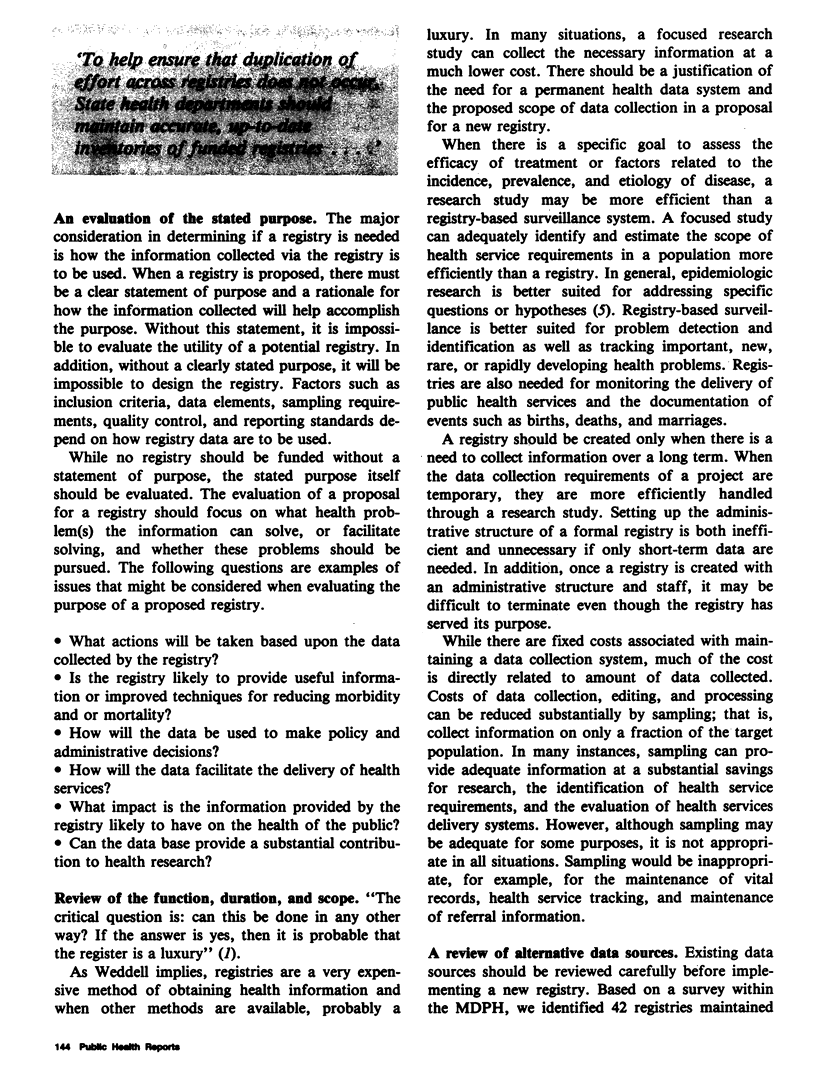
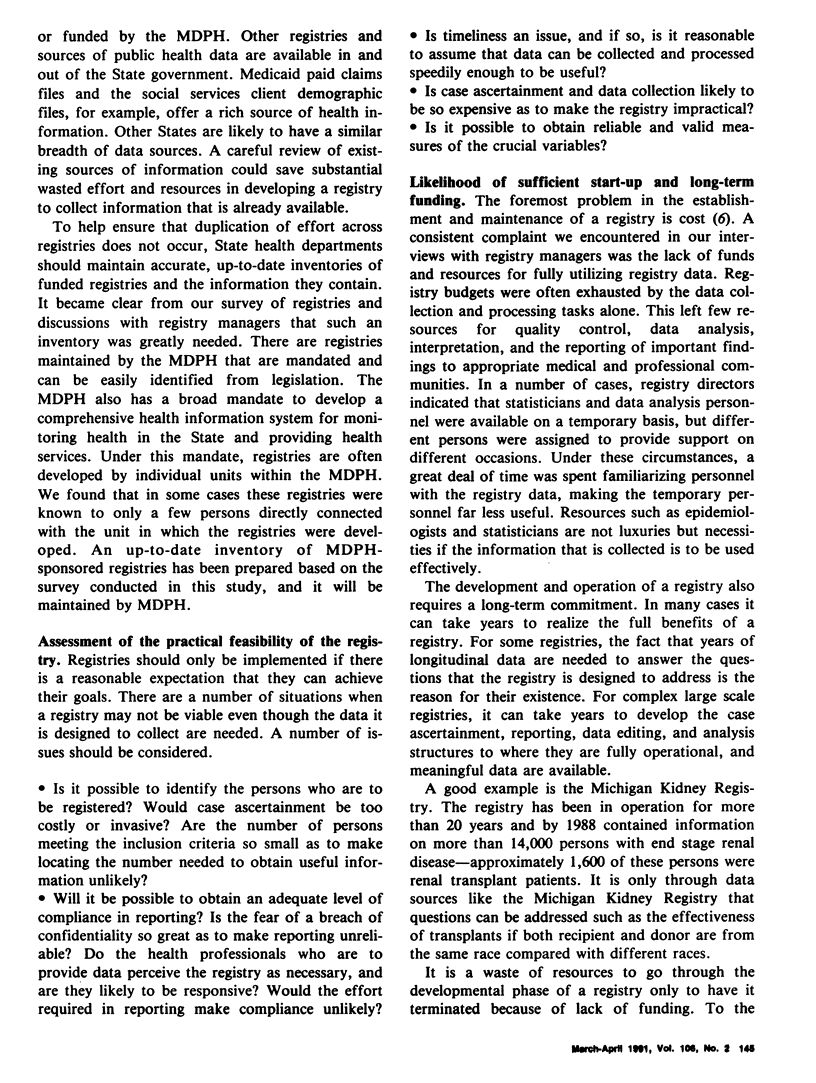
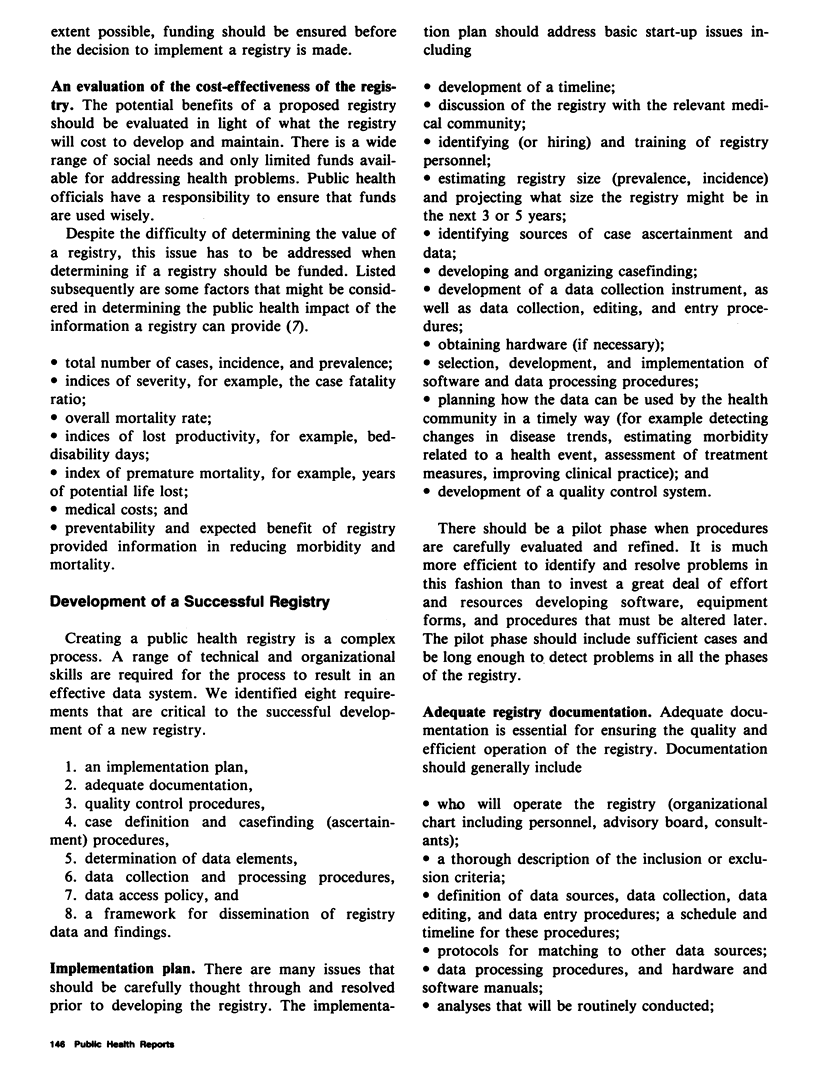
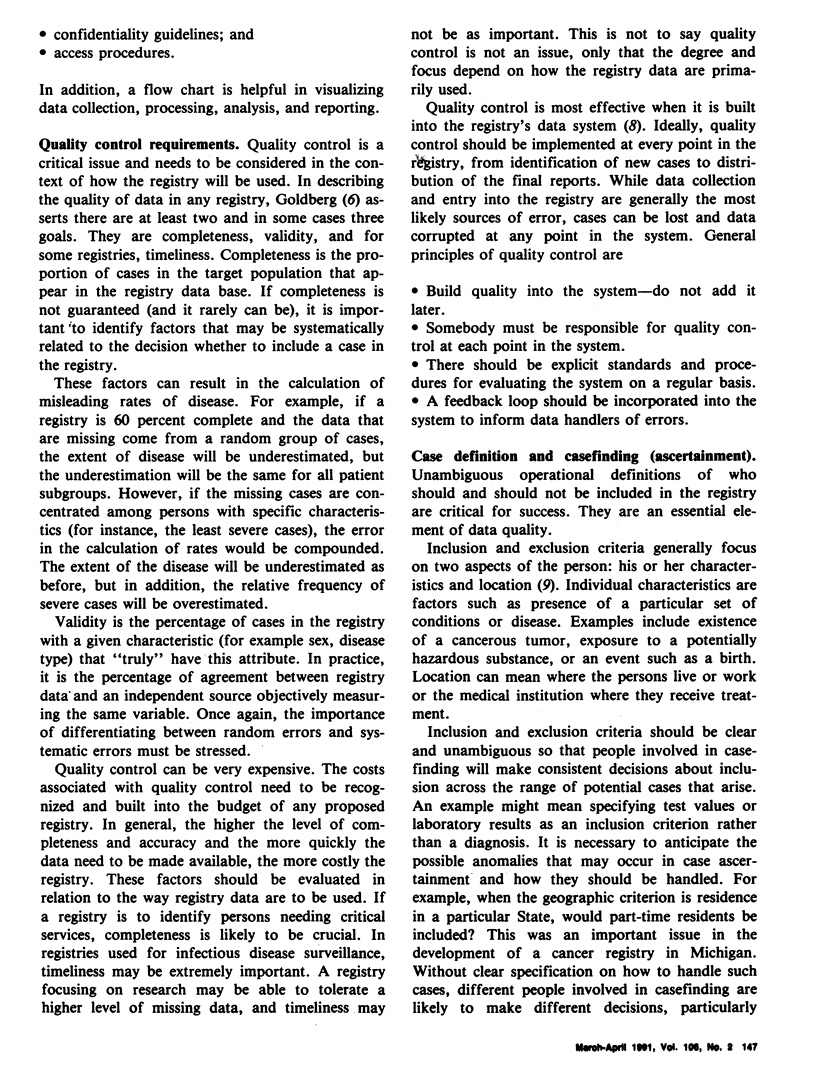
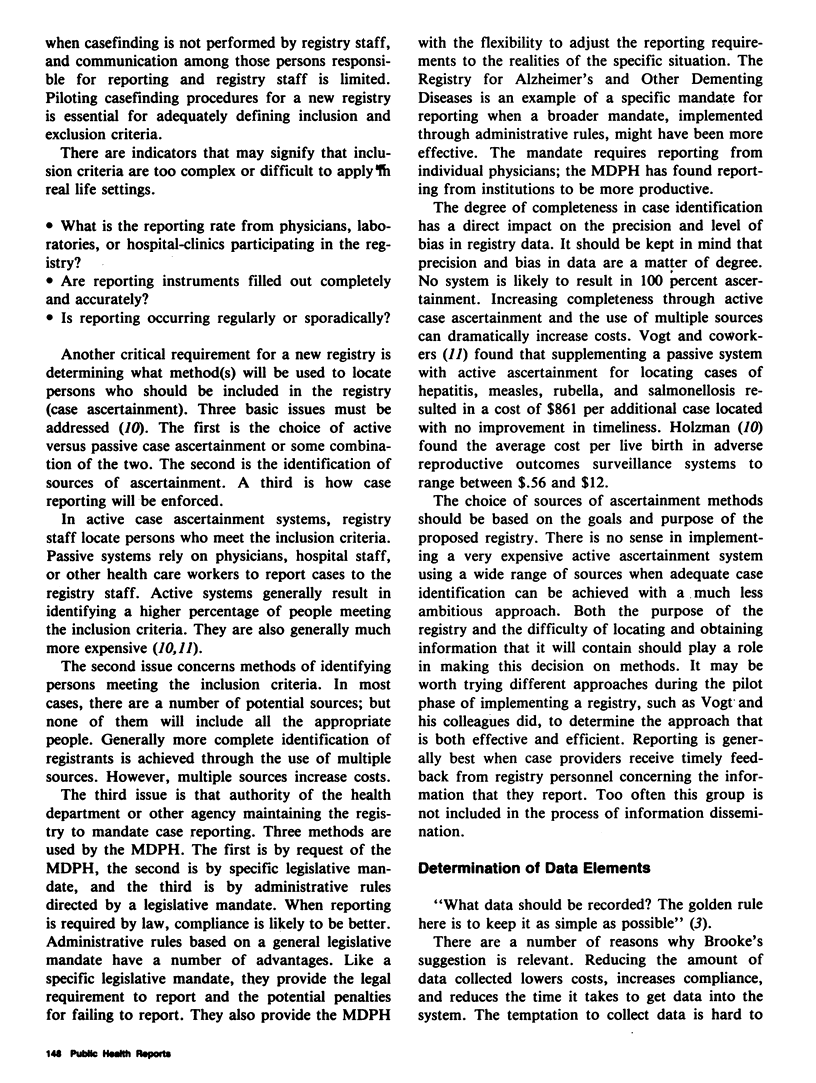

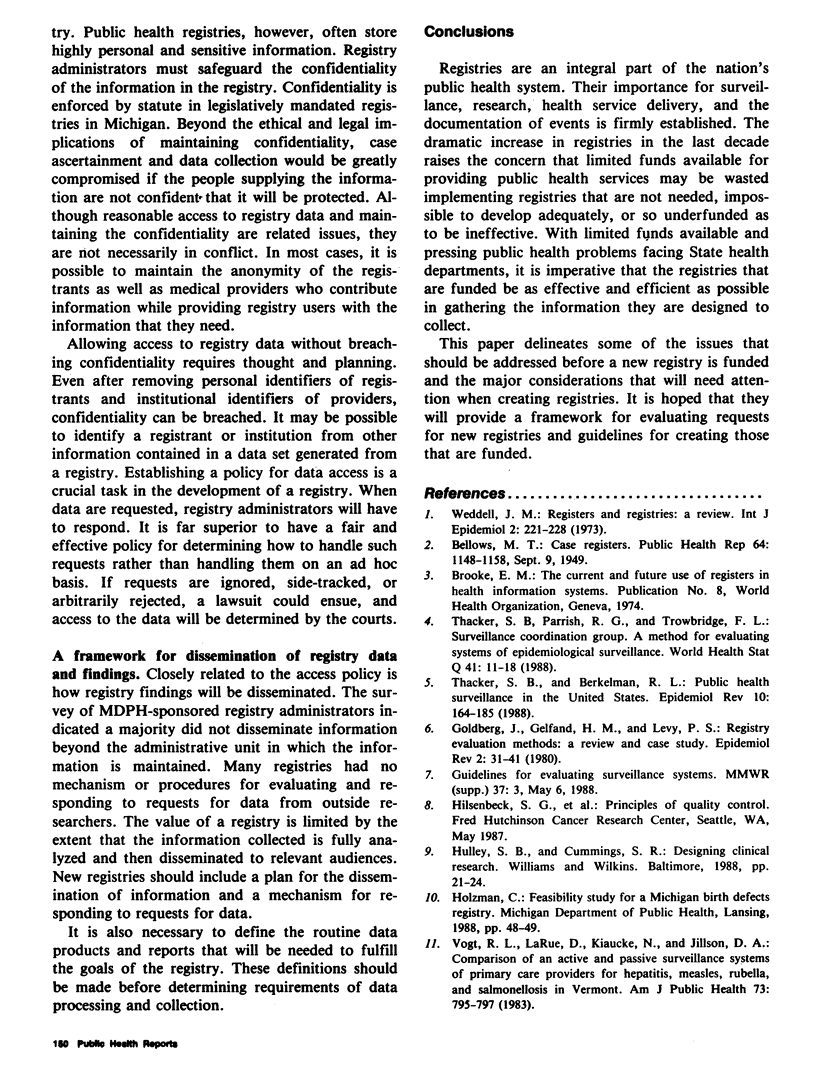
Selected References
These references are in PubMed. This may not be the complete list of references from this article.
- Thacker S. B., Berkelman R. L. Public health surveillance in the United States. Epidemiol Rev. 1988;10:164–190. doi: 10.1093/oxfordjournals.epirev.a036021. [DOI] [PubMed] [Google Scholar]
- Thacker S. B., Parrish R. G., Trowbridge F. L. A method for evaluating systems of epidemiological surveillance. World Health Stat Q. 1988;41(1):11–18. [PubMed] [Google Scholar]
- Vogt R. L., LaRue D., Klaucke D. N., Jillson D. A. Comparison of an active and passive surveillance system of primary care providers for hepatitis, measles, rubella, and salmonellosis in Vermont. Am J Public Health. 1983 Jul;73(7):795–797. doi: 10.2105/ajph.73.7.795. [DOI] [PMC free article] [PubMed] [Google Scholar]
- Weddell J. M. Registers and registries: a review. Int J Epidemiol. 1973 Autumn;2(3):221–228. doi: 10.1093/ije/2.3.221. [DOI] [PubMed] [Google Scholar]


